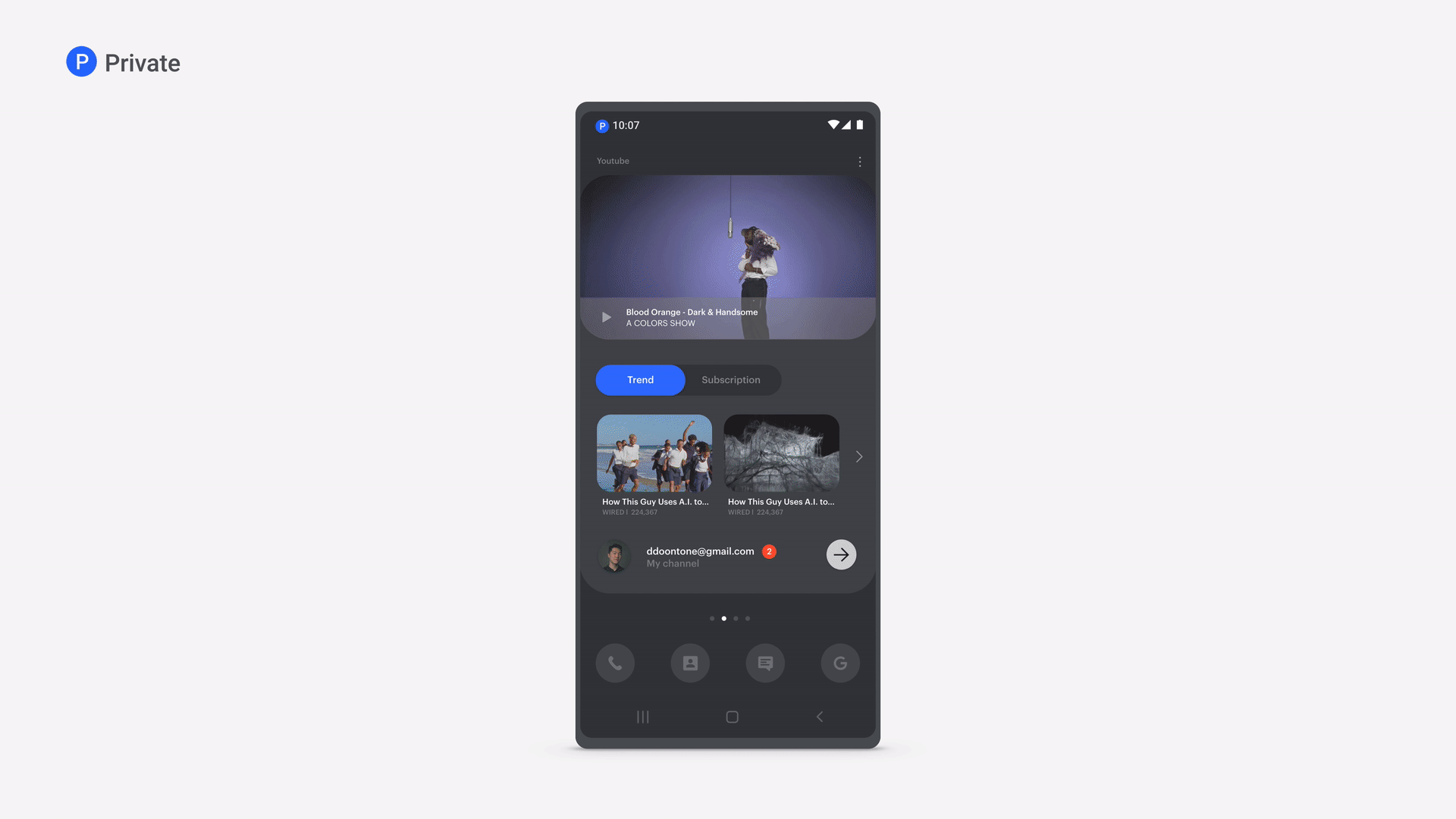Shift 2 (2020)
Shift service is designed as a mobile launcher for dual-sim. So users should be able to use it without difficulty and should be expressed in basic visual languages rather than unusual designs. Also, because the iOS cannot use an external launcher, Shift is designed based on Android.
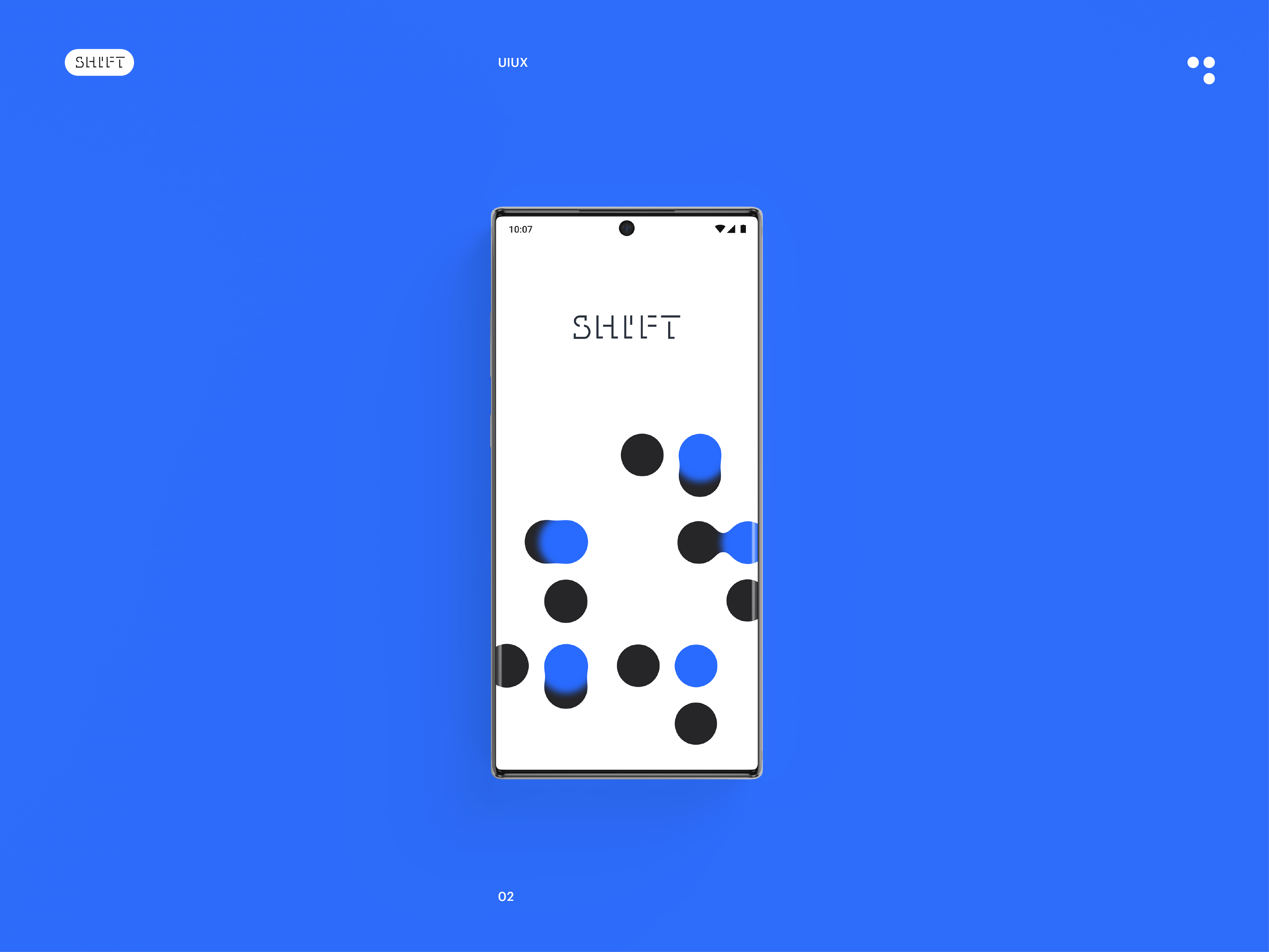
I created the concept of ‘shift dot’, which helps users move around two modes easily. On the lock screen, the user can enter a particular mode by dragging and dropping the icon to the shift dot.


If you drag horizontally, you will see an independent Task Mode home screen. The number you use will be the main number in that mode. Similarly, when dragging vertically to ‘shift dot’, it enters the private home screen and using second number. This ‘shift dot’ structure allow the user to freely shift between two numbers, two modes.
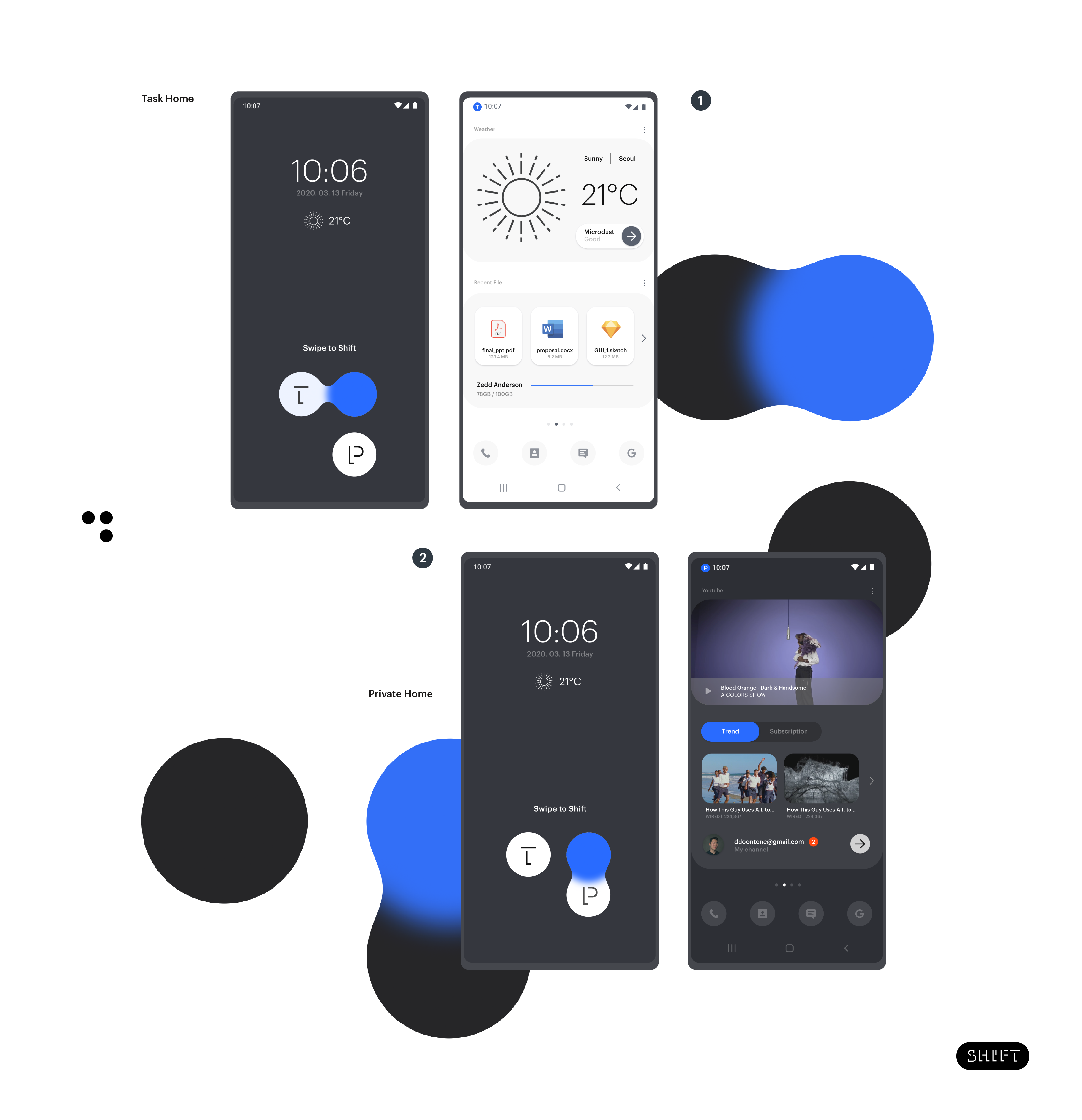
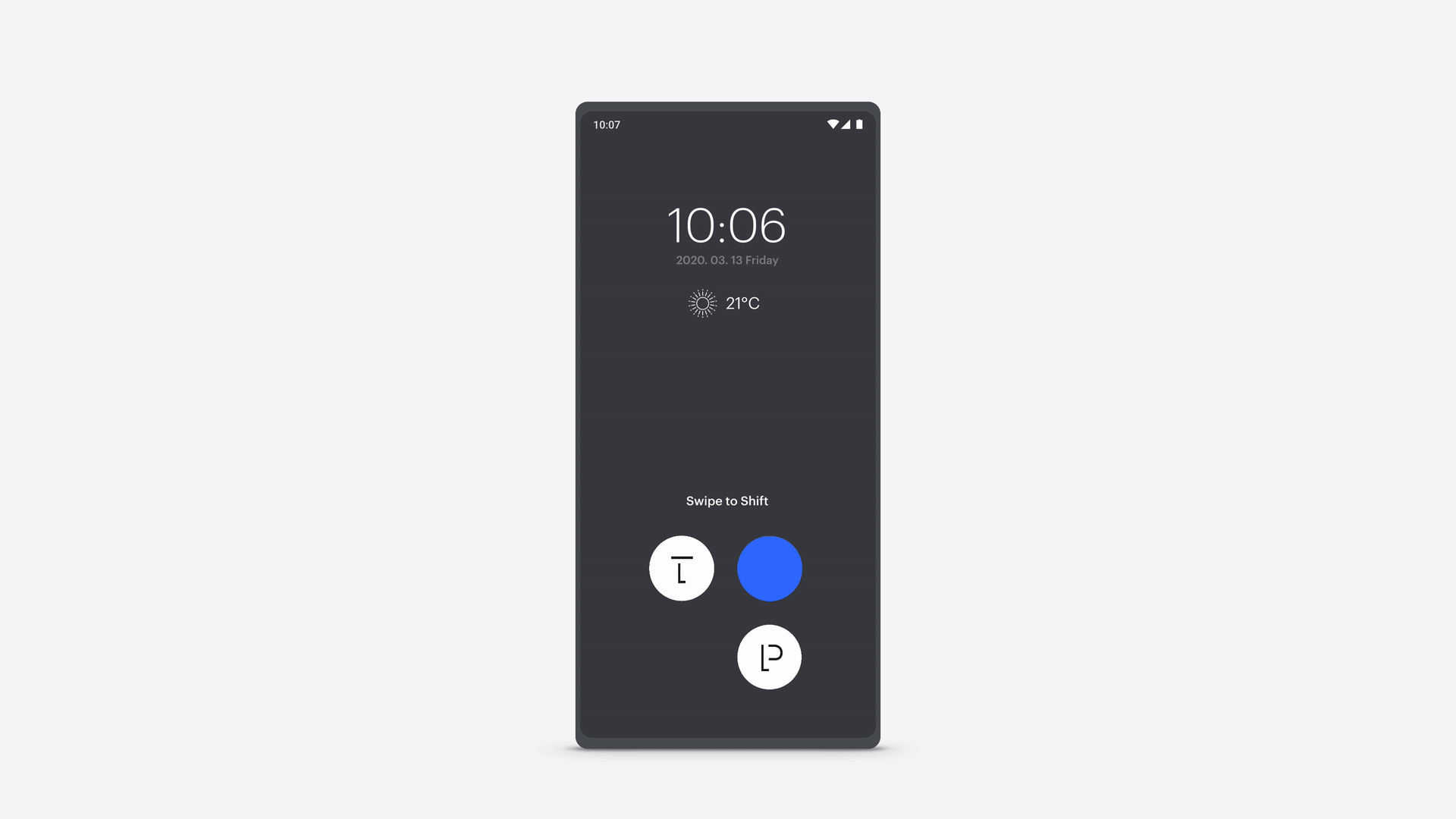
When you enter each mode, there are dedicated widgets that can be used best. Task mode includes work, schedule, weather or file management, and email widgets. In Private Mode, video-related widgets were designed because users are more likely to use their smartphones for video watching, except for business hours. Task mode is white theme, and private mode is designed with dark theme, which visually distinguishes each mode.

The concept of ‘shift dot’, which is divided horizontally and vertically, was also applied to the design of alarm windows, so that alarms coming from Task numbers are distinguished by horizontal and white, and those coming from private numbers are vertical and black theme. Therefore, users can easily recognize where and what alarms are coming from.

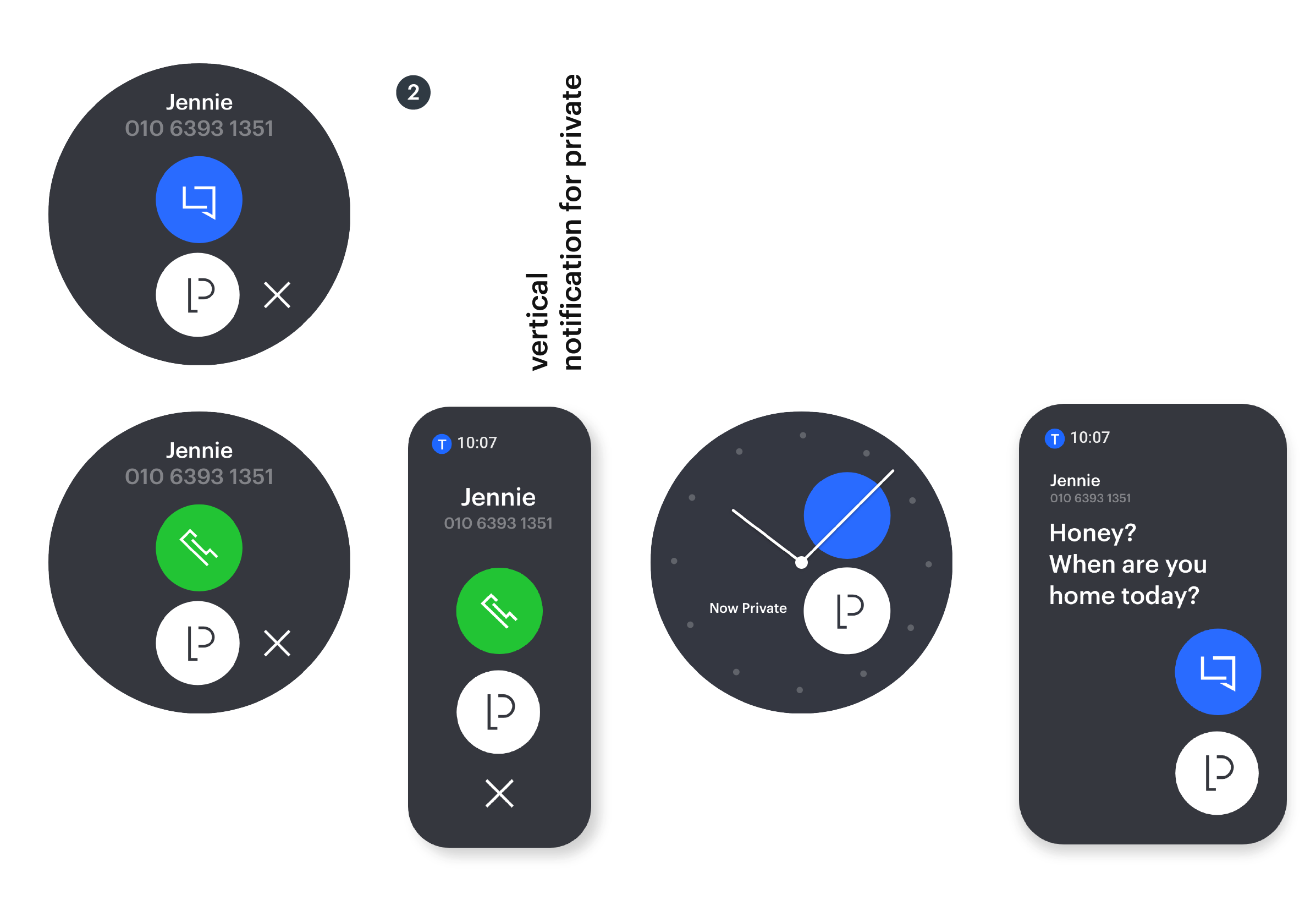

It allowed users to recognize whether the incoming calls come from the Task number or from the Private number, which is also linked to Watches, giving uniformity throughout the service with the same interface.

What if a user receives a text message alarm that came to a private number while in Task mode? Users do not need to shift to private mode. Just press the private alarm window to reply. Even though the currunt mode and alarm are different, it is designed to be used seamlessly.

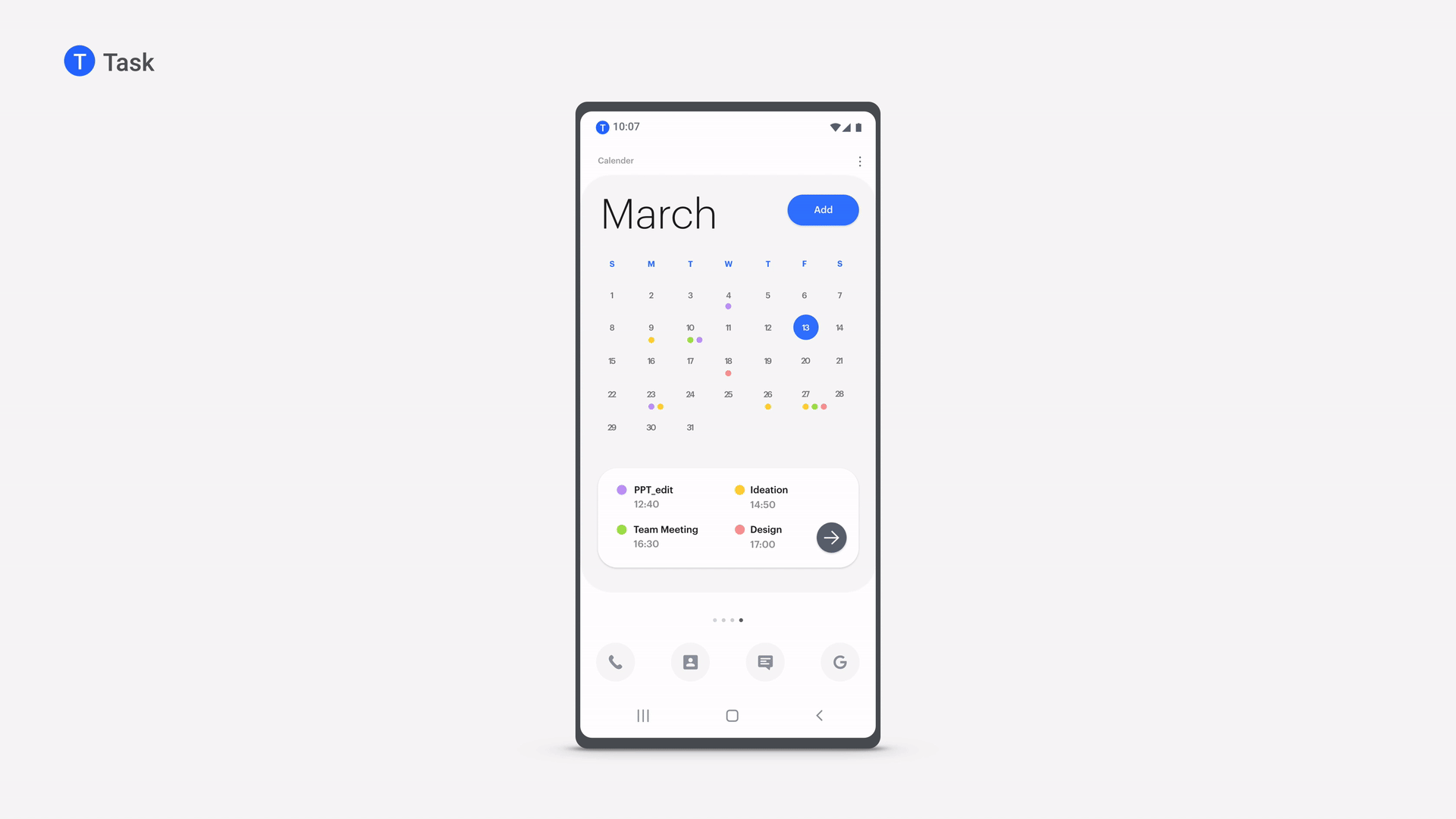
If users couldn’t receive the call, they can check the missing alarms in missed notification window at once. They are arranged in horizontally and vertically, white and black for each mode. The current mode is placed at the top.

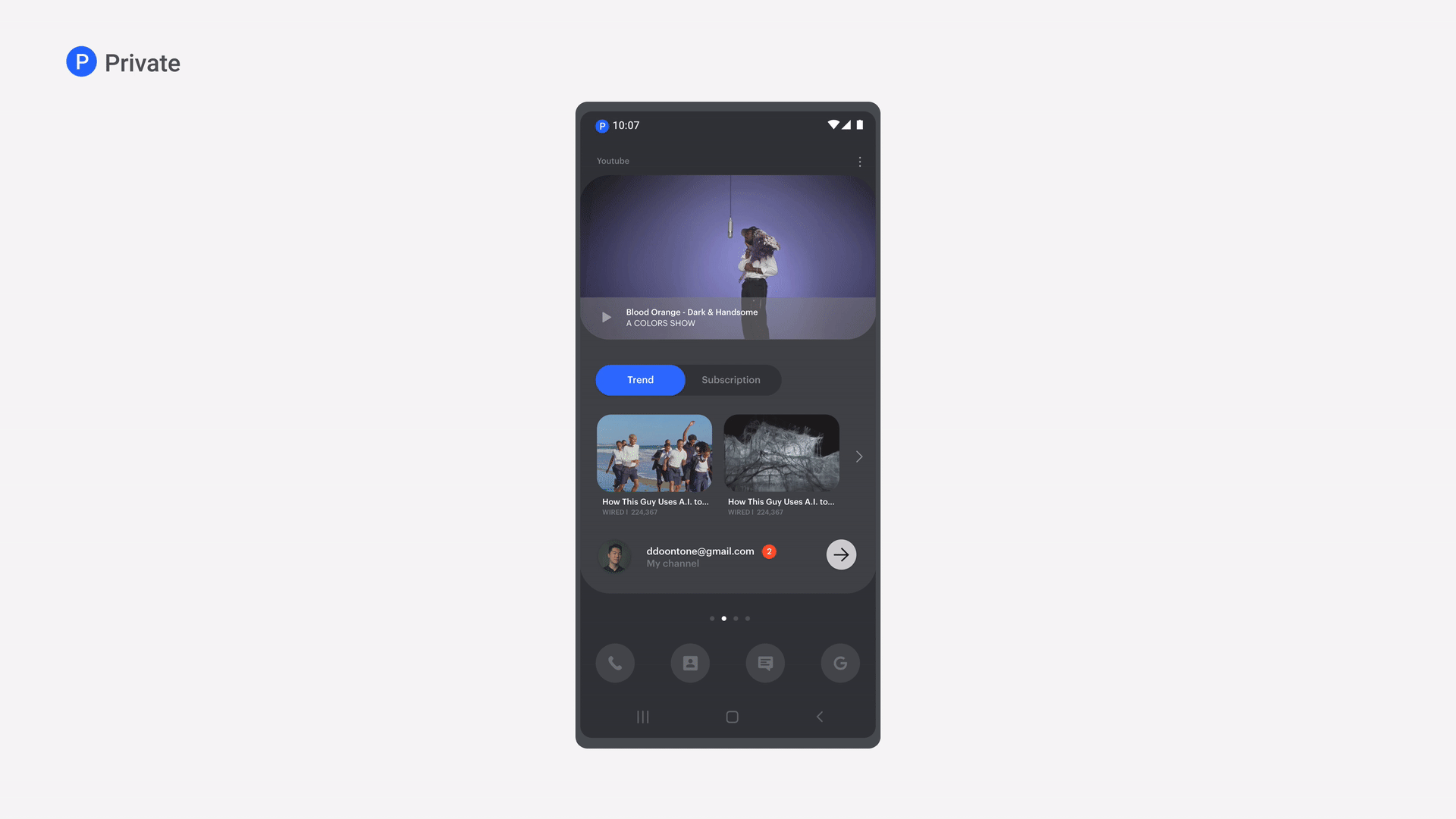
Users can disable or turn back on modes. They can choose which mode to be disable by pressing the icon located in the top left of the home screen. As before, users can turn it off or turn it back on by dragging and dropping it horizontally and vertically. This helps to use two numbers independently.
